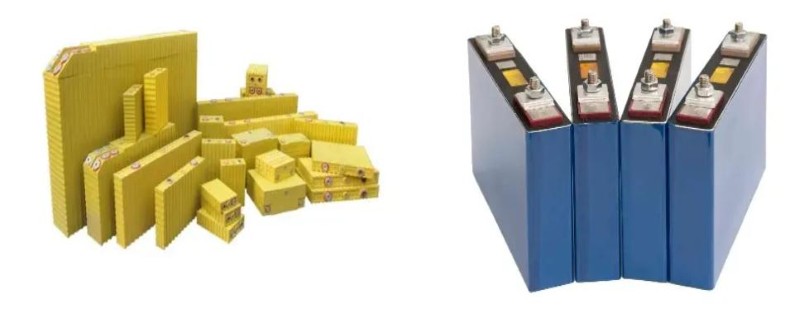
In the field of new energy, lithium battery technology is continuously innovating, reshaping the way energy is stored and used. Among them, Lithium Iron Phosphate (LiFePO4) and Yttrium-doped Lithium Iron Phosphate (LiFeYPO4) batteries have emerged as two mainstream battery types of significant interest for high-performance energy storage systems. They exhibit notable differences in chemical composition, energy density, cycle life, and application direction. This article provides an in-depth analysis of the core advantages, performance comparison, and practical application scenarios of these two battery types, assisting engineers and energy planners in making scientific selections.
LiFePO4 batteries are the preferred choice in the industrial and residential energy storage market due to their excellent thermal stability, safety, and cycle life. Their cathode material utilizes the lithium iron phosphate structure, effectively preventing thermal runaway or combustion even under high temperatures or overcharging conditions.
Core Performance Highlights:
Long Cycle Life: Capable of 3,000 to 5,000 full charge-discharge cycles.
Strong Thermal Stability: Operates safely and reliably even in high-temperature environments.
Stable Discharge Plateau: Output voltage remains stable at approximately 3.2V.
Moderate Energy Density: Approximately 90-120 Wh/kg.
Typical Applications: Solar energy storage systems, portable power stations, electric motorcycles, grid energy storage projects.
The crystal structure of LiFePO4 batteries effectively inhibits oxygen release, significantly reducing the risk of combustion during overcharging. This makes them particularly favored in applications demanding high safety standards, such as home energy storage or data centers.
Compared to traditional LiFePO4 batteries, LiFeYPO4 batteries enhance conductivity, energy density, and high-rate performance by introducing the rare earth element Yttrium (Y) into the cathode material. This makes them suitable for industrial and power equipment with high-performance requirements.
Key Performance Upgrades:
Improved Ionic Conductivity: Yttrium ions enhance lattice stability, optimizing electron/ion pathways.
Higher Energy Density: Can reach 130-150 Wh/kg.
Faster Charge/Discharge Rates: Lower internal resistance significantly reduces charging time.
Cycle Life Comparable or Superior to LiFePO4: Performs better under optimized usage conditions.
Typical Applications: Electric vehicles, industrial robots, drones, high-power electric tools.
Yttrium not only improves the integrity of the material structure but also reduces lattice phase separation phenomena occurring during high-rate usage, thereby extending battery lifespan and enhancing overall reliability.
Performance Parameter | LiFePO4 | LiFeYPO4 |
Cathode Material | Lithium Iron Phosphate | Yttrium-doped Lithium Iron Phosphate |
Energy Density | 90-120 Wh/kg | 130-150 Wh/kg |
Cycle Life | 3,000-5,000 cycles | 3,000-6,000 cycles (optimized conditions) |
Charging Speed | Moderate | Fast |
Cost | Lower | Slightly Higher |
Thermal Safety | Excellent | Excellent |
Application Scenarios | Energy Storage, Solar, E-Motorcycles | EVs, Robots, Industrial Automation |
LiFePO4 Battery: The Cost-Effective Choice
In solar energy storage systems, microgrids, and off-grid energy solutions, LiFePO4 is widely used due to its mature technology path, reliable safety, and lower cost. Especially in developing countries and remote areas, LiFePO4 batteries are key enablers for improving energy access.
LiFeYPO4 Battery: The New Engine for High-Performance Drive
In scenarios demanding higher performance, such as electric vehicles, industrial robots, and unmanned transport vehicles (AGV/AMR), LiFeYPO4 significantly optimizes equipment volume, range, and efficiency with its high energy density and fast charging capability.
While the introduction of rare earth yttrium increases material costs, LiFeYPO4 batteries demonstrate long-term advantages from a Total Cost of Ownership (TCO) perspective in the following aspects:
Longer service life, leading to better cost amortization.
Smaller size and lighter weight, reducing structural and transportation costs.
Fast charging reduces equipment downtime and improves operational efficiency.
In high-intensity usage scenarios, the high efficiency of LiFeYPO4 delivers significant economic returns.
Both battery types are cobalt-free, environmentally friendly, and recyclable. LiFePO4 has already passed multiple international certifications (e.g., UL, IEC, UN38.3), with more mature supporting BMS systems and recycling infrastructure. As an emerging technology path, LiFeYPO4 is gradually gaining market and certification support.
Choose LiFePO4 if you need:
A cost-controllable energy storage system solution.
A stable battery suitable for high-temperature and harsh environments.
A mature product already widely integrated into existing solar/storage platforms.
Choose LiFeYPO4 if you pursue:
Higher energy density and rapid charging performance.
Lightweight and compact system design.
Suitability for scenarios requiring high-frequency and high peak power output.
There is no absolute superiority or inferiority between LiFePO4 and LiFeYPO4; the choice should be based on a comprehensive consideration of application requirements, cost budget, and performance expectations. With the accelerating commercialization of yttrium doping technology, the application fields of LiFeYPO4 will continue to expand, bringing more possibilities to high-performance energy storage devices.
The future energy system will inevitably be built upon more efficient, safer, and more environmentally friendly battery technologies. Choosing the appropriate chemical system is a crucial step towards achieving this goal.